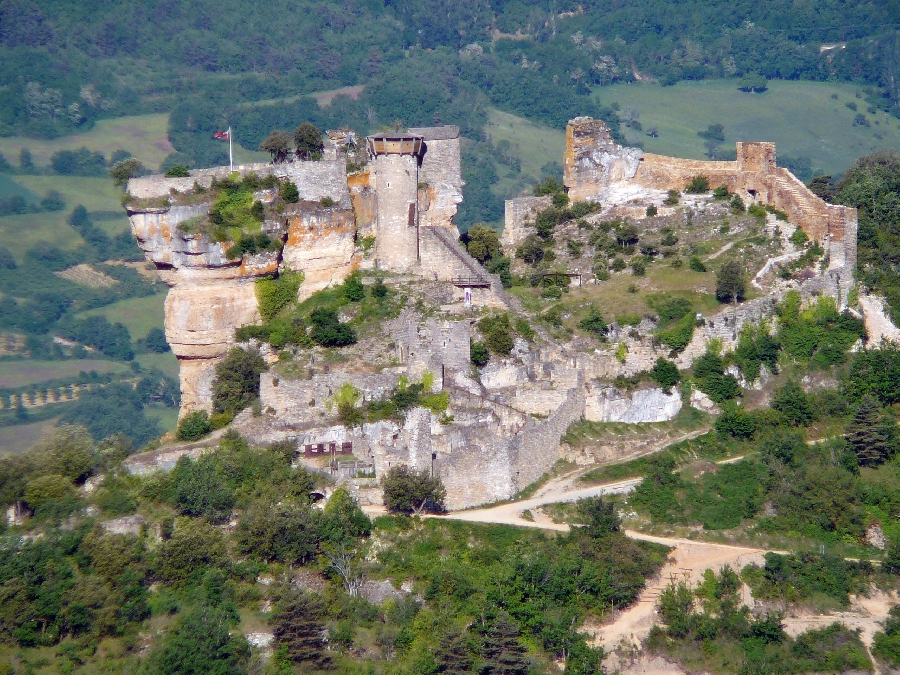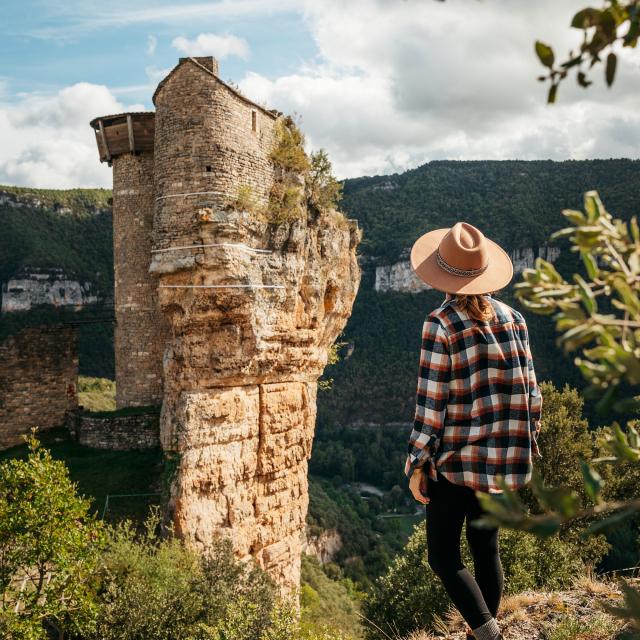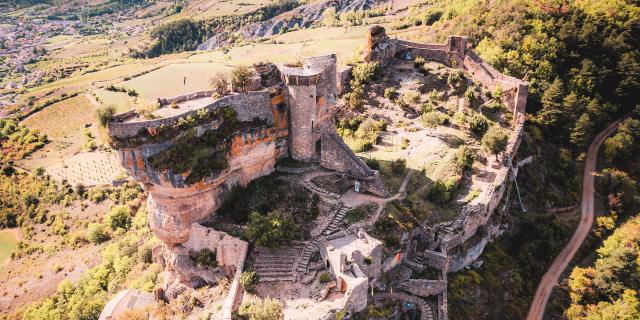Introduction: The Castle’s Strategic Position
Château de Peyrelade, perched atop a rugged outcrop in the Aveyron region of southern France, stands as a testament to medieval military architecture. Built in the 12th century, this fortress was not only an impressive structure but also a strategic stronghold controlling vital routes and providing military defense for the region. The castle’s elevated position above the Tarn Gorge offers stunning views and further highlights its role in overseeing surrounding lands.

Historical Significance: A Symbol of Power
Constructed during the reign of the Counts of Toulouse, Château de Peyrelade played a crucial role in medieval territorial conflicts. Its primary purpose was to safeguard the region and serve as a command center during times of war. The castle’s stronghold function was particularly vital during the Albigensian Crusade (1209–1229) when the French crown sought to eliminate the Cathar heresy in southern France. Château de Peyrelade was often at the center of these historical struggles.

Additionally, the castle endured several sieges and was partially destroyed during the French Wars of Religion in the 16th century, reflecting the turbulent nature of the region. Despite this, the structure’s resilient design ensured that it remained an important landmark in local history, with its remaining ruins continuing to attract interest.
Architecture: Military Mastery in Stone
The castle’s architecture is a remarkable example of medieval fortification techniques. With thick stone walls, a central keep, and an intricate system of defensive walls and gates, Château de Peyrelade was built to withstand prolonged sieges. The keep served as a last line of defense, while the surrounding walls were designed to protect inhabitants from attackers. The strategic use of the rocky outcrop itself provided a natural defense, making it difficult for enemies to breach.

In addition to its defensive features, the design of Château de Peyrelade also demonstrates the importance of aesthetics and status in medieval architecture. Its imposing structure, with its towering walls and grand gates, reflects the power of the lords who built and occupied it. The castle’s position, high above the surrounding valley, further emphasizes its commanding nature.
Enduring Legacy: A Monument to History
While much of Château de Peyrelade was damaged over the centuries, significant portions of the structure have survived and remain accessible to visitors today. The ruins provide a fascinating glimpse into the past, allowing modern visitors to walk through the very halls and passageways that once witnessed centuries of history. The panoramic views from the castle’s elevated position offer a chance to appreciate the region’s natural beauty, further enhancing the castle’s allure.

Today, Château de Peyrelade serves as a symbol of both medieval resilience and regional history. Its preservation as a historical monument highlights its cultural significance, as well as the continued interest in understanding the complexities of the past.
Conclusion: A Fortress That Tells a Story
Château de Peyrelade is more than just a ruin—it is a piece of living history. Its strategic location, architectural brilliance, and historical significance make it a captivating site for anyone interested in medieval architecture and the turbulent past of southern France. As visitors explore its grounds, they are reminded of the castle’s role in shaping regional power dynamics and its enduring place in the historical landscape of the Occitanie region.
By studying the remains of Château de Peyrelade, we not only learn about the military history of medieval France but also gain insights into the lives of those who once inhabited this imposing structure. As it continues to stand proudly against the passage of time, the castle’s legacy remains an integral part of the region’s cultural heritage.

